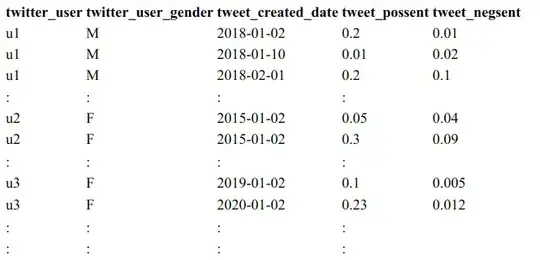I am trying to understand how the gender of the user relates to her/his use of language in tweets. For this purpose, I have downloaded all tweets of several hundred users and have obtained positive and negative sentiment scores for each tweet. The data looks as the following:
Should I analyze this as mixed-effects model with tweet_possent (or tweet_negsent) as DVs with twitter_user_gender nested under twitter_user? Or should I be converting this to panel data?
I am not sure if panel data analysis is more appropriate here.
